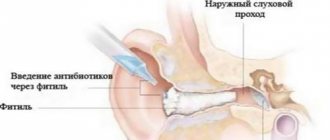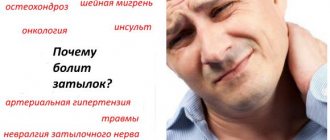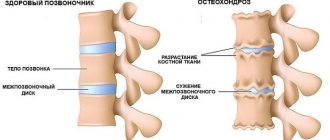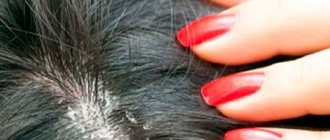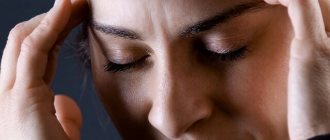Symptoms
Typically, these attacks last about five seconds, but their number can fluctuate greatly.
There are no associated symptoms. A common cause of their manifestation is migraine, and the area is the places characteristic of cluster pain. It manifests itself in different ways, it all depends on the cause. People often experience this symptom in the following situations:
- physical fatigue;
- stress;
- hormonal fluctuations;
- mental fatigue;
- many different pathologies.
These unpleasant symptoms can be life companions even for those people who consider themselves absolutely healthy and look so from the outside. But you must admit, they worsen a person’s quality of life, because sometimes it seems that your head is about to burst at the seams. The following types of localization of stabbing pain in the head are possible:
- on right;
- left;
- in the occipital region;
- in the temporal region.
Causes of pathology
The occurrence of stabbing pain in the head is diagnosed in patients when exposed to external irritants and the occurrence of various diseases:
- Panic attacks. The duration of attacks is 6-8 hours. Tingling in the head is accompanied by illness with increased blood pressure, chills, and shortness of breath. The patient has a fear of dying. The disease develops against the background of tumor processes in the spine and spinal cord of the adrenal glands. In patients, the disease is diagnosed after experiencing severe stress.
- Cervical osteochondrosis. The disease is characterized by deformation of the intervertebral discs and their dystrophy. In pathology, a disturbance in the normal blood supply to the head is diagnosed. Patients report the occurrence of tinnitus. Rapid progression of the disease is observed with a sedentary lifestyle. If the patient remains in one position for a long time, the tingling in the head intensifies.
- Chronic fatigue. If the patient’s body’s reserves of resources are constantly decreasing, this leads to the development of pathology, which is accompanied by stabbing pain in the head. This is explained by a violation of vascular tone in the brain. Patients complain of tingling in the head and a feeling of heat.
- Hypertension. The appearance of colic in the head is diagnosed in patients who constantly experience stressful situations. With hypertension, patients are diagnosed with dizziness and decreased quality of vision.
- Overworked. Tingling in the head occurs with constant overwork. In this condition, there is stagnation of oxygenated blood, which causes tissue poisoning. After taking analgesics, there is no decrease in the intensity of tingling in the head. If a person ignores the symptoms, this will lead to dizziness, decreased concentration, and loss of coordination.
- Vegetative-vascular dystonia. When the disease occurs, patients are diagnosed with autonomic disorders. The patient develops neurological disorders and improper functioning of internal organs. When sick, there may be a stabbing sensation in the head, a decrease or increase in blood pressure. Patients complain of drowsiness, tremors in the limbs, and compression in the heart. The pathology is accompanied by increased urination and hyperhidrosis.
- Migraine. It is a neurological disease in which the right or left temple pulsates. After a certain time, there is a gradual spread of pain to the entire hemisphere. Patients claim that they feel dizzy, vomiting, weakness, etc. The headache is paroxysmal in nature. The duration of the main attack is 4-72 hours.
- Neuralgia of the occipital nerve. With pathology, there is pain in the head, which has a stabbing, burning and cutting character. Pain is observed in one part of the head in the place where the nerve root is damaged. During the day, the patient has repeated exacerbations.
- Eye diseases. The pathological process is observed in people who are engaged in mental activity and work at the computer, which leads to overstrain of the visual organs. The pain can be localized in one place or observed throughout the head.
Colic in the head appears in a variety of diseases that need to be identified in order to prescribe effective treatment.
Migraine
A developed migraine can cause tingling in the head. Migraine is one of the neuralgic pathologies, which is also accompanied by pulsating pain sensations in one, for example, the back of the head, then in the other. Eliminating the causes of migraines is not difficult, usually these are:
- severe stress;
- “chronic” lack of sleep or constant oversleeping;
- drinks containing alcohol;
- oral contraception;
- weather change and others.
With all this, the appearance of migraines is eliminated by medications that are aimed at relieving pain. Such drugs include analgesics such as aspirin, pentalgin, sumatriptan.
Tingling on the head is caused by vegetative-vascular dystonia. This disease leads to disruption of the functionality of many organs, but the cardiac system is mainly affected. Dystonia can appear when:
- overwork;
- brain injury;
- strong emotional shocks;
- viral infection;
- constant use of alcohol;
- use of substances with psychotropic effects.
In this case, the appearance of:
- drowsiness;
- feeling of heaviness in the head;
- pulsating and tingling;
- temperature;
- swelling and trembling of the limbs;
- squeezing pain in the heart and others.
If such a disease appears, then you should remain calm so as not to aggravate the situation by panic. You need to try to improve your mood and distract yourself from depressing thoughts. Taking medications cannot be avoided. The life mode will also have to be edited.
Of course, if tingling occurs in any part of the head, for example the occipital region, and manifestations similar to the development of dystonia, you should consult a doctor. After confirming the diagnosis, medications will be prescribed aimed at restoring blood circulation and blood flow to the brain. Taking vitamins is also necessary. It is worth knowing that dystonia is not always an independent disease; it can be a symptom or manifestation of an even more serious disease.
Vegetovascular dystonia
Very often, the cause of stabbing pain in the head is impaired blood circulation caused by vasospasm or dilation. The symptom may appear in the following cases:
- stress;
- irregular nutrition;
- dehydration;
- lack of sleep;
- calorie restriction diet.
It is these triggering factors that cause an attack of neurocircular dystonia. Seizures are caused by:
- traumatic brain injury;
- prolonged work at the computer (eye strain);
- inflammatory process occurring on the mucous membrane of the nose or mouth;
- nervous fatigue;
- inflammatory diseases;
- cold;
- tick-borne encephalitis;
- meningitis.
It is immediately necessary to pay attention to the fact that the last three reasons cause increased permeability of the vascular walls, which leads to pain. Also, with vegetative-vascular dystonia, the heart often hurts and the head hurts at the same time. Please note that if these symptoms last long enough, and the pain in the heart is already burning, then you should immediately call an ambulance.
Diagnosis and treatment
If the symptom recurs frequently, the patient should consult a doctor who will conduct an examination and take a medical history. The patient's blood pressure, temperature and pulse are measured. Diagnosis consists of general and biochemical blood tests. If the need arises, computed tomography and magnetic resonance imaging are prescribed.
Treatment of a pathological condition directly depends on the causes of its occurrence. Therapy for colic in cervical osteochondrosis is carried out using non-steroidal anti-inflammatory drugs, physical therapy, massage, and physiotherapy. The patient must take nootropic and analgesic drugs, as well as chondroprotectors.
An integrated approach is recommended in the treatment of vegetative-vascular dystonia, which will eliminate unpleasant symptoms and strengthen the body. The patient is recommended to use sedatives, diet therapy, and vitamin complexes. If a person is overtired, it is recommended to take proper rest. Experts recommend the use of massage and relaxation techniques. When overworked, aromatherapy and baths with sedatives - chamomile, mint - are used.
For migraines, headaches during attacks are relieved with analgesics, nonsteroidal anti-inflammatory drugs, ergotamines, and triptans. To prevent exacerbation, it is recommended to adjust your lifestyle, use a diet, and take medications.
For occipital neuralgia, muscle relaxants, non-steroidal anti-inflammatory drugs, anticovulsants, and analgesics are taken. The use of sedatives, vitamin complexes, massage, and physiotherapy is recommended. If there is no positive therapeutic effect, then the person should take steroid drugs.
For stabbing pain, it is recommended to relieve symptoms, which will provide relief to the patient’s condition. To eliminate the cause of the pathology, it is recommended to undergo a course of treatment, which is prescribed by a highly specialized specialist.
The occurrence of tingling in the head indicates an incorrect lifestyle of a person or the progression of diseases. If a symptom is observed for a certain time, the patient should seek help from a doctor who will correctly diagnose and prescribe effective treatment.
Treatment methods completely depend on the disease. As noted by patients who have experienced stabbing pain in the head, it is necessary to relieve them with drugs that are aimed at the cause of the pain.
VSD (vegetative-vascular dystonia):
- “Actovegin”;
- “Dihydroquercetin” and other angioprotectors.
Spasmodic headaches:
- "Cavinton";
- “Stugeron” and other vasodilators.
Antiplatelet agents improve microcirculation and prevent thrombosis:
- “Clopidogrel”;
- Acetylsalicylic acid.
For osteochondrosis, the following chondroprotectors are recommended:
- “Mukosat”;
- “Don” and so on.
Having studied numerous reviews, you can see that for osteochondrosis, the drug “Asparkam” is often used, which helps relax the muscles of the cervical spine, which restores blood flow to the brain. In addition, it is necessary to attend exercise therapy classes and massage sessions.
What to do if your head is tingling
If tingling and pain appear in the right hemisphere or on the left side of the head, you should visit the hospital as soon as possible. The fact is that such symptoms can signal the presence of serious diseases, including oncology. Let's take a closer look at the features of diagnostic procedures and treatment for tingling in the head.
Diagnosis of the disease
It is impossible to get rid of pathological symptoms without determining the true cause of its manifestation. Therefore, at the first tingling sensation in the head area, you should consult a therapist. To prescribe the necessary procedures for examining a patient, the doctor will first conduct a detailed interview with the patient. At this stage, the patient will need to remember and tell the specialist in detail everything that is associated with the deterioration of well-being. For example, “After dinner, I developed a tingling and cutting pain on the left side of my head and face.” This will help the doctor in diagnosing the disease. Most often, with such symptoms, patients are prescribed the following examination methods:
- laboratory research of biological fluids,
- CT, MRI of the central nervous system,
- Ultrasound of elements of the cardiovascular system,
- measuring blood pressure at rest and under various loads,
- ophthalmological examination,
- radiography.
If there are doubts or difficulties in making a diagnosis with tingling in the head, the patient will be prescribed additional diagnostic procedures.
Treatment
Features of the treatment of tingling in the head completely depend on the diagnosed disease. When you get rid of the disease, the pathological symptoms will gradually disappear. Let's look at how diseases that cause tingling are treated:
- If it is determined that the patient suffers from cervical osteochondrosis, he will be prescribed: exercise therapy, acupuncture, physiotherapy, massage, drug treatment. The most effective medications for this disease are: Indomethacin, Mydocalm, Amidopyrine.
- When overtired, herbal infusions help to relax. Let's look at one recipe. To prepare a healing drink, you will need to mix dried lemon balm, mint and thyme in equal proportions. The resulting mixture will need to be poured with hot water and boiled for seven minutes. After infusing for ten minutes, the herbal tea is ready for use.
- For VSD, medications are usually prescribed that accelerate metabolic processes and increase vitality. For example, Ginseng tincture or liquid extract of Eleutherococcus. Glycine, Actovegin, Eltacin will help from tablets.
- To relieve migraine attacks, patients are prescribed analgesics or special tablets for migraines, for example, Sumamigren, Zomig, Nomigren. Spray preparations, such as Imigran, also help eliminate tingling.
- To eliminate tingling in the head due to neuralgia, the following procedures will be effective: exercise therapy, manual therapy, warming, massage. The best medications are: Nurofen, Gabapentin, Tizalud, Duloxetine.
- With tired eyes and ophthalmological diseases, proper rest, limiting working in front of a monitor and watching TV will help.
Regardless of the reason why a tingling sensation is felt in the head, simultaneously with the treatment prescribed by a specialist, the patient can use the following methods to alleviate the condition:
- relaxing bath with sea salt,
- aromatherapy, it is best to choose eucalyptus, orange and rosemary oils for the procedure,
- light self-massage of the scalp,
- gymnastics for the neck muscles, the simplest exercise is to make ten circular movements of the head, first clockwise, then counterclockwise,
- strong tea with lemon, the drink invigorates and accelerates metabolic processes in the body.
Tingling in the head is a rather unpleasant symptom that may indicate the development of pathological processes in the body. Therefore, in order to avoid adverse health consequences, if your health worsens, you must immediately visit the hospital. Only under the supervision of a competent specialist is it possible to quickly get rid of painful manifestations.
Endocrine system
Stitching pain in the head can be caused by:
- diabetes mellitus (the cause is the occurrence of capillaropathy, that is, the functioning of small vessels is disrupted, which leads to capillarotoxicosis and headaches);
- thyrotoxicosis (due to the acceleration of energy metabolism, increased oxygen consumption from the blood is stimulated);
- adrenal insufficiency (the cause of this symptom is circulatory disorders, since vascular tone is weakened and it becomes difficult for the heart to pump blood through them);
- hyperfunction of the adrenal glands (in this case, blood pressure increases due to the release of cortisol, which retains sodium and water).
Special manifestations of discomfort
Many patients complain of a burning sensation throughout the head. Less commonly, the burning sensation manifests itself in the form of itching inside the head, which can be compared to the feeling of sitting for a long time under the scorching sun.
This itchy pain may be accompanied by monotonous, slightly throbbing pain inside the head, rapid pulse, high blood pressure and other symptoms.
If it is the scalp that is bothering the burning sensation – this is due to exposure to allergens, then you need to refuse to eat food to which you are allergic or try to avoid sources that cause an allergic reaction. Severe heat in the head can also manifest itself in the form of attacks.
But pain in the head, similar to tingling with needles, may indicate not only overwork of the body, but also the presence of serious illnesses.
Left side of the head
Very often the pain is localized in one specific place. This section talks about stabbing pain in the left side of the head, which is often a consequence of a condition called migraine. How to relieve these unpleasant sensations if it is not possible to receive professional medical help in a timely manner?
Agree, doing this at home is not so difficult. The most important rule is dry heat for the head. Heat a dry towel using a radiator or an iron, wrap your head. Lie down, close your eyes and relax. The room should have minimal lighting. This simple technique will help you quickly get rid of unpleasant sensations.
Headache tingling facial skin
Ivan Drozdov 12/10/2018
Headache is one of the most common symptoms manifested in diseases of the nervous, vascular and spinal systems. The nature, degree of intensity and frequency of development of its attacks are varied.
One of the types of headaches is a tingling sensation in the head, like needles, appearing in various parts of the head. A one-time and short-term manifestation of unpleasant sensations can be caused by external stimuli, and therefore does not require treatment.
Attention should be paid to stabbing pains, which regularly bother you and are combined with a number of other symptoms that worsen your well-being.
Localization of pain and its causes
Uncomfortable sensations can be localized in different parts of the head:
- pain in the frontal area;
- internal heat and tingling;
- temporal pain;
- burning in the back of the head;
- encircling (comes from the inside and covers the entire head);
- burning in the neck.
Pain in the forehead area is often associated with vision and respiratory problems. A burning sensation coming from within - without a clear localization, can be sharp or slow, quickly increasing pain occurs. This is the most dangerous type of pain; with such symptoms you need to urgently go to the doctor.
A burning or tingling sensation in the back of the head often occurs from sitting for a long time and with a tense neck. Heat in the back of the head may also progress to a feeling of slight numbness. Girdle pain in the form of a burning sensation often indicates psychological factors that cause it.
Risk factors
An unhealthy lifestyle leads not only to chronic pain in the head, but also to chronic disease. Bad habits, such as smoking, alcohol addiction, or exposure to external negative sources, such as long working hours, constant stress - these are what you need to avoid if you want to be healthy. A burning sensation in the head can also be caused by a number of hormonal disorders in the body.
A burning sensation can be caused by diseases of the scalp, as well as allergic reactions of the body to food and cosmetics.
The causes of a burning sensation inside the head can be: migraines, meningitis, sinusitis, encephalitis, pharyngitis, eye pathologies.
Tingling of the face like needles causes – Dr. Petrov
A person has the ability to perceive with the skin not only tactile sensations, but also various signals from the body from the inside. Signals can be random, temporary, caused by momentary circumstances or internal diseases.
Some sensations are included in the list of symptoms of specific diseases. One example of sensations on the skin is a slight tingling feeling, sometimes along with itching, burning, and rawness throughout the body, the reasons for which we will talk about today.
What is a tingling sensation on the skin?
Tingling on the skin is at least rare, but every person experiences it.
- If this sensation appeared after a long stay in one position, for example, after a night's sleep, and then quickly passed, then this is a normal reaction of the body to the fact that the nerves were in cramped circumstances.
- If the tingling sensation on the skin does not have a logical explanation for its origin, and the symptom often recurs, then you need to contact a specialist to undergo an examination and understand the cause of what is happening.
From a medical point of view, we feel tingling when:
- nerve endings are not able to transmit signals to the brain (for example, due to oppression during sleep),
- in the area where there is a tingling sensation, blood circulation is impaired.
Its classification
The phenomenon when a tingling sensation is felt on the skin, as if with needles, can be of the following types:
- all over the body
- in certain parts of the body.
According to the duration of the symptom, cases are distinguished:
- chronic manifestation of tingling sensations,
- the symptom is episodic in nature - a person experiences such signals on the skin sometimes, or they are associated with a temporary specific factor.
We will tell you below about identifying the symptoms and causes of itching and tingling of the scalp, face, arms, legs, genitals, back, tingling of the skin of the chest, abdomen.
Identifying a symptom
Every cell of the body receives nutrition through blood circulation. If some part of the body is pressed, for example, by body weight during sleep, then blood circulation in this area is difficult and numbness may be felt. The restoration of blood flow will be signaled by tingling sensations on the skin for some time.
In old age, due to a slowdown in processes, including blood circulation, constantly present symptoms of tingling and numbness on the skin (chronic manifestation) may be observed.
A person may experience discomfort and malaise.
To determine what sensations make up the picture of malaise and what they are most often associated with, the patient should be more attentive to various body signals.
Possible causes of tingling skin all over the body and in different places are described below.
Possible violations
If the appearance of tingling on the skin does not have a simple and understandable reason for the person suffering from this problem, then the symptom may be a manifestation of the disease:
- diabetes mellitus,
- functional disorders in the liver,
- diseases of the skeletal system: joints and spine;
- tumors of a malignant nature,
- cardiovascular disease,
- injuries of various types,
- migraine,
- carpal tunnel syndrome,
- acute circulatory disorders in the brain,
- an inflammatory disease that can initiate the effect of compression of nerves, as well as pathological formations;
- malfunction of the thyroid gland,
- epilepsy,
- Raynaud's disease,
- frostbite,
- barotrauma of the ear,
- cold allergy;
- anaphylactic shock;
- bullous dermatitis,
- severe alcohol dependence,
- herpes of various types (shingles, simple and genital herpes),
- mental illness.
Diagnostics
To understand what to do when there is tingling on the skin, it is necessary to find out the cause of this phenomenon. You should be wary if the symptom is always observed on one side of the body, and the presence of other accompanying symptoms is also a bad sign:
Specialists will conduct an examination to find the cause of the tingling sensation on the skin. If necessary, the following methods can be used:
Face tingling like needles
Have you been trying to heal your JOINTS for many years?
Head of the Institute for the Treatment of Joints: “You will be amazed at how easy it is to cure your joints by taking the product every day for 147 rubles ...
Read more "
The sensation of tingling throughout the body is scientifically called paresthesia. This feeling occurs when there is insufficient blood supply to the soft tissues of the body. Along with tingling, the following symptoms may also occur:
OUR READERS RECOMMEND!
Our readers successfully use Sustalaif to treat joints. Seeing how popular this product is, we decided to bring it to your attention. Read more here...
- Coldness or numbness in fingers and toes.
- Weakness and decreased motor function of the joints.
- Itching appears.
- Increases sensitivity to touch.
- The tingling sensation can be mild or severe, stabbing.
If the skin pricks like needles and itches at night or during the day due to an uncomfortable posture, then this symptom cannot be called pathological. A light massage and patting on the problem area of the skin will quickly bring the condition back to normal. But sometimes, stabbing sensations and itching all over the body are a sign of a serious illness.
Back of the head
Now a little more about stabbing pain in the head (in the occipital part), which can be explained by cause-and-effect relationships. As a rule, they indicate the presence of a serious illness. You can find information about them in the table below.
| Disease | Explanation |
| Cervical spondylosis | As a rule, this serious spinal disease is chronic. What becomes the source of pain? Overgrowth of the edges of the vertebrae with osteopharitis. The latter term is usually understood as beak-shaped growths. Very often, the impetus for the development of the disease is age-related changes in the cervical spine. |
| Myogelosis of the cervical region | There are simply a lot of reasons for the development of this disease. Here are just a few of them (the most common):
|
| Cervical migraine | With this disease, a person very often feels unpleasant pain not only in the occipital region, but also in the temporal region. |
All the diseases listed in the table can cause an unpleasant symptom. If it occurs, it is necessary to consult a specialist regarding a comprehensive examination to clarify the true cause.
Provoking diseases
Diseases that can cause headaches:
- A common cause of burning, tingling and sensation of heat in the head and neck is cervical osteochondrosis. With this disease, the intervertebral discs in the spine of the neck are deformed, which leads to their degeneration. The normal blood supply to the head is also disrupted, and tinnitus may occur. The disease progresses quickly in those people who work at a computer or drive a lot. In addition to burning, the development of cervical osteochondrosis may be accompanied by: numbness of parts of the face, crunching when turning the neck, burning and tingling in the back of the head and neck. The pain intensifies after being in the same position for a long time, even after sleeping in an uncomfortable position. The development of the disease is facilitated by: excess weight, sedentary work, lack of sports in life, and even high pillows.
- Panic attacks (sympatho-adrenal crisis) also provoke a similar symptom - about 2.5% of people on Earth suffer from them. Such attacks last from six to eight hours, in addition to a burning sensation in the head, patients also experience increased blood pressure, a fear of death, a person suffocates and shudders. The causes of such panic attacks can be tumors of the spine, adrenal glands or spinal cord, or severe stress experienced.
- Chronic fatigue. Constant depletion of the body's internal reserves of resources leads to many negative consequences and diseases that can develop into chronic ones. The tone of blood vessels in the head is disrupted, and a delay in blood flow in the brain often manifests itself in the form of a burning sensation inside the head.
- Tingling and heat in the back of the head may also indicate hypertension (tension of the artery walls). People who live and work in stressful environments are especially susceptible to it. In addition to a burning sensation in the head, hypertension is accompanied by tingling in the temples and crown of the head, mild dizziness, and problems with the eyes.
- Another neuralgic aspect. Inflammation of nerve fibers is often accompanied by pain in the area of nerve innervation. Burning and heat in the back of the head appears with neuralgia of the occipital nerve, as well as the nerve endings emerging at the level of the cervical spine. In this case, the pain has a pronounced burning character and cannot be treated with analgesics. Usually, in addition to pain, other symptoms appear, such as sensory disturbances. When you touch the scalp, the pain only intensifies, and paresthesia often appears (a sensation of crawling, tingling). Treatment is carried out by a neurologist; often the course of treatment includes not only medications, but also physical procedures. Therapy is carried out over a long period of time, from several months to a full year.
- If your head burns, this may also indicate eye diseases. Tingling and burning appear with frequent eye fatigue and decreased vision.
My face and neck feel like needles
Many people, at least occasionally, experience tingling sensations like needles, spreading throughout the body. If this only happens occasionally, then there is no need to panic. But if negative feelings are repeated repeatedly and cause discomfort, you need to find the cause of their manifestation and eliminate it.
Classification of tingling in the body as a symptom of disease
The feeling of goose bumps on any part of the skin and small prickles along them should not be left without due attention. They may indicate dormant diseases that are occurring or just emerging in the body, of which a person is completely unaware. Doctors call this manifestation of sensitivity paresthesia.
This happens mainly due to poor blood flow to certain areas. In some situations, before such manifestations there is a loss of sensitivity to irritants of the lower or upper extremities.
Along with this, the following changes are noticeable:
- sensitivity increases to even the most gentle touches;
- in some areas, on the contrary, it decreases;
- muscle weakness appears;
- joint mobility decreases;
- annoying itching and unpleasant burning sensation;
- severe pain reactions in any part of the place.
All these signs indicate a significant decrease in the sensitivity of nerve endings. However, even manifestations that do not cause discomfort should not be ignored.
This may be the main signal of the onset of such diseases:
- ischemia;
A stroke could be the cause of tingling throughout the body. - failures in the timely supply of blood to the brain;
- various injuries;
- sudden convulsive attacks;
- alcoholism;
- pathological disorders of the functioning of excretory organs;
- oncological formations;
- endocrine system;
- spine and joints;
- migraine;
- Raynaud's disease.
If the state of discomfort does not go away for a long period, then you need to contact your local doctor or neurologist to receive further instructions on diagnostics.
Possible causes of tingling in the body
Tingling all over the body like needles, the causes of which are accompanied by chronic diseases, can be characterized by:
- deprivation of the body’s ability to perceive external stimuli;
- painful attacks;
- muscle atrophy;
- debilitating itching.
Often a person experiences such negative reactions after nerves and blood vessels are pinched. This happens when you are in an uncomfortable body position for a long period of time. And when it changes, blood circulation throughout the body is normalized and discomfort disappears.
In older people, cells perform their purpose less well and, as a result, receive poor nutrition. Therefore, their paresthesia has chronic manifestations.
Other reasons include:
- skin diseases;
- long-term and voluminous physical exercises;
- fungal infection;
- mental disorders;
- insect bites;
- presence of helminths;
- allergic reactions to medications or cosmetics;
- influence of temperature changes.
A catastrophic lack of chemical elements necessary for the passage of vital processes in the body is manifested by the following symptoms.
On the torso
With spondylosis of the upper spine, discomfort occurs in the neck, back of the head and part of the back. This occurs due to the fusion of several adjacent vertebrae, which leads to compression of the nerve.
On the head
When cerebral blood circulation is disrupted, the head area suffers, nausea appears and the eyes become darker.
Possible causes of discomfort on the head may be:
- overwork – when vascular tone decreases, blood flows out of the brain;
- dystonia;
- eye strain – prolonged work at the computer, reading in poor lighting.
Migraine can also produce similar negative manifestations.
Whiskey
Stitching pains in the head, or more precisely in the temporal part, are not always intense and pronounced. As a rule, they are simply ignored by people, because they can be tolerated even without painkillers. This position is incorrect, because discomfort of this kind can be a consequence of some disease. You will find information about them in the table in this section of the article.
| Disease | Explanation |
| Diseases of an infectious nature | The symptoms of these diseases are quite wide, and stabbing pain in the temporal part of the head may also occur. |
| Poisoning | In addition to pain in the temporal lobes, the following symptoms may be detected:
|
| Pheochromocyte | With this disease, the patient experiences increased production of adrenaline, and the consequence of this phenomenon is increased blood pressure. |
| Hypotension | To put it simply, the term refers to low intracranial pressure, which is also often a cause of discomfort. |
| Idiopathic intracranial hypertension | In this case, there is very high pressure in the head, and as a result, severe pain in both temples. |
In addition, reasons may include:
- pressure on nerve endings;
- chronic lack of sleep;
- menstrual cycle;
- gassing;
- starvation;
- being at high altitude (since in this case absolutely everyone has increased intracranial pressure).
Diagnostics and differential diagnostics
Before starting treatment, you must find out what caused the burning and heat in your head. You need to visit a therapist, neurologist and possibly other specialists, take general blood and urine tests, and also make an appointment with an ophthalmologist. This is an initial consultation with doctors.
In addition, an X-ray of the skull is taken, a CT scan or MRI (magnetic resonance imaging) is performed. In this case, a standard set of studies is used.
If an anomaly is suddenly discovered in the brain area, then to accurately determine the disease it is necessary to undergo a tomography. This is the best method for diagnosing diseases in the head area. The patient is placed in a tomograph.
Its principle is based on the effect of hydrogen protons on the human body. After this, encephalography (or ultrasound) is prescribed. The patient's head is lubricated with Vaseline and an ultrasonic sensor is passed over it. The received data is displayed on the monitor. They need to be recorded and decrypted.
The last stage of the examination is electroencephalography. This method is based on recording nerve impulses emanating from the brain.
Using electroencephalography, you can find out in which part of the head the disorder occurred. All of the above methods of examining the head are painless, but effective in identifying serious diseases.
In the process of general diagnostics, the following facts are revealed:
- frequency of pain in the form of burning and tingling;
- the connection between pain and the body’s response to pain;
- nature of pain, intensity, duration, localization.
Differential diagnosis is a method that allows you to identify a disease in a person by excluding possible diseases due to the patient’s lack of obvious symptoms of the suspected diseases.
As a result, the correct diagnosis is made and proper treatment is carried out. There are special computer programs that help to most accurately identify the disease based on the detected symptoms.
Before starting pain treatment, a number of tests are carried out, including laboratory tests - they can look for signs of infection and inflammation. A visit to an ophthalmologist is mandatory for the patient.
A visit to this doctor is indicated in almost all cases of headaches, since there may be changes in the fundus of the eye that can only be determined by an ophthalmologist using special equipment; The examination also establishes the true cause of the headache. Plus, the ophthalmologist will evaluate the state of refraction, visual acuity and visual fields of the patient.
Why does the right side of my head hurt?
There are many reasons why the right side of the head hurts. Among them are both relatively minor ones (colds) and serious ones that can provoke serious consequences.
Migraine
Migraine is a hereditary disease associated with a genetic predisposition that has specific symptoms that do not appear in other types of headaches.
Throbbing pain in the head on the right or left side is localized in the eye area, behind the eye (pressing on the eyes), in the temple, on the forehead. The pain generally begins in these places, after which it spreads throughout the head. Migraine pain is severe, throbbing, and is accompanied by a number of symptoms:
- general anxiety;
- nausea;
- increased sensitivity to light, noise, odors.
Meningitis
Meningitis is an infectious disease that causes inflammation of the meninges (meninges). The brain and spinal cord affected by meningitis swell, and the supply of oxygen and nutrients to the nerve tissues decreases.
Inflammation is expressed by fever, severe headache in the right hemisphere or in the right. A characteristic feature is the stiffness of the neck.
Other symptoms:
- pain in muscles and joints;
- tingling fingers;
- vomit;
- sensitivity to light;
- confusion, disturbances of consciousness;
- confused speech;
- decreased pain threshold;
- herpes around the mouth.
This condition can be acute, often occurring after a head injury, or chronic, when a hematoma grows in the brain, appearing later.
A typical symptom is acute pain in the head. Intracranial bleeding is also caused by a ruptured artery, and in this case the manifestations are represented by unbearable pain in the right hemisphere of the head or in the left.
Pain in the right hemisphere of the head is the most common symptom of increased intracranial pressure. With slow intracranial hypertension, the onset and development of headache intensity is gradual. On the contrary, with parenchymal hemorrhage the pain in the head is immediate; with acute blockage of the cerebrospinal fluid pathways it develops within several hours.
The pain intensifies with increased pressure in the intracranial space: when bending over, coughing, defecating, etc. Typically, increased cephalgia after sleep. Headache due to intracranial hypertension responds poorly to analgesics.
Paroxysmal hemicrania is a rare disease in which the nature and location of pain (head throbbing) and autonomic symptoms are similar to the manifestations of cluster cephalgia. But the attacks are shorter and more frequent. Attacks are characterized by sharp, severe unilateral pain located either orbitally, supraorbitally, or in the temporal region, above the ear, behind the ear.
The headache lasts 2–30 minutes, begins abruptly and ends suddenly. The frequency of attacks is high, with an average number of more than 10 attacks per day. The disease more often affects women.
About 80% of patients with the disease have a chronic form, the remaining 20% have an episodic form.
This type of cephalalgia is characterized by attacks of unilateral headaches, in which the right side of the head and the right eye or left side hurt. In 15–20% of patients, the sides alternate during an attack. The duration of the attack is 15–180 minutes.
This is probably one of the most painful conditions known to man. Cluster headache has an abrupt onset and abrupt end, accompanied by one or more of the following autonomic signs on the ipsilateral side:
- lacrimation;
- conjunctival irritation;
- swelling of the nasal mucosa;
- nasal secretion;
- ptosis, miosis;
- swelling of the eyelids;
- facial hyperhidrosis.
Pain on the right side of the head is the first sign of a brain tumor in approximately 1/5 of cases. But often little attention is paid to these pains, because they are chronic and not severe.
Soreness tends to get worse over time, is often present in the morning upon waking, and can vary regardless of the size or rate of growth of the tumor.
A small, fast-growing tumor can cause similar attacks of cephalalgia as a large, slow-growing one.
Brain injuries have various causes, the most common being a blow or a fall. TBI is manifested by a short-term unconsciousness, shooting pain in the head, and memory loss during the period of injury.
The resulting bleeding causes compression of the brain, followed by a hematoma that crushes the brain tissue.
Symptoms of more severe traumatic brain injury:
- incomprehensible speech;
- impaired coordination of movements;
- visual, auditory, sensory disorders;
- anxiety;
- confusion;
- unusual behavior;
- clear or bloody fluid coming from the nose or ears;
- severe stabbing headaches (may radiate to the ears);
- vomit;
- changes in pupil size, their asymmetry;
- swelling of the wound, bruises, head deformation, presence of bone fragments in the wound;
- bruises around the eyes.
Concussion
A concussion is a disorder of brain function that causes short-term loss of consciousness and retrograde amnesia.
Symptoms:
- headache;
- visual disturbances;
- dizziness;
- nausea;
- loss of balance;
- confusion;
- tinnitus;
- impaired concentration;
- amnesia.
Pain and tingling in the head that is present for a long time or constantly is unusual and is a reason to visit a doctor.
Costen's syndrome
This is facial pain associated with jaw dysfunction. The syndrome occurs quite often. Interestingly, structural changes in the jaw joint are rare. On the contrary, reduced resistance to stress and somatization tendencies are common in this population.
Costen's syndrome is characterized by dull, pulsating or sharp pain, localized mainly pre- and postauricularly, spreading to the back of the head and neck. The pain may be temporary or permanent. Pain in the ear and head occurs and/or worsens with jaw movement, for example, when opening the mouth, yawning, chewing.
Symptoms:
- headache developing in temporary connection with a disease of the jaw joint, improving or worsening in the context of the development of the disease;
- soreness is the result of active/passive movement or pressure on the jaw joint and surrounding muscles of mastication;
- if it shoots in the head on the right side, the pain indicates the side of the affected joint.
Tonsillitis
Tonsillitis is an acute inflammation that affects the tonsils, which become swollen, covered with a white coating, and become very painful.
Symptoms of tonsillitis (tonsillitis):
- fever;
- fatigue;
- muscle pain, headache (often radiating to the eye);
- a sore throat;
- swelling of the tonsils and associated problems with swallowing (up to the inability to swallow solid food);
- hoarseness;
- cough.
Secondary signs:
- the patient feels sick and often vomits;
- concerns about obstruction and nasal discharge;
- lymph nodes often hurt and become enlarged;
- swollen glands in the front of the neck.
The throat and tonsils are red with tonsillitis; purulent foci are often present on the tonsils - white coverings or spots. In exceptional cases, there is no fever or, on the contrary, it rises even before a sore throat or difficulty swallowing occurs.
Rest and a moistened towel on your forehead are some of the simplest yet effective ways to get rid of headaches on the right side. A gentle massage of the temples and the area at the back of the head may also help.
https://www.youtube.com/watch?v=jUxi_fQXu4E
But in case of a migraine attack, these medications will only help temporarily or not at all. Proper treatment for migraines is to use medications at the first sign of an aura or pain attack. Antimigraine drugs are designed to suppress the attack itself and all accompanying symptoms (vomiting, nausea, etc.) as quickly as possible. At the same time, they should have minimal side effects and work well in case of long-term use.
Significant progress was achieved by the discovery of a new type of medicine, triptans. Today they are the most effective therapeutic group and form the basis of migraine treatment. Triptans are available as tablets, subcutaneous injections, and nasal sprays.
If tingling is a one-time occurrence, to eliminate the discomfort you need to rest well and regain your strength. The best option would be regular walks in the fresh air, relaxation, and healthy sleep. If the problem appears constantly or is accompanied by additional symptoms, you should visit a doctor and find out its cause.
You can contact a therapist, neurologist, ophthalmologist, take the necessary tests and undergo a series of examinations. If necessary, the specialist will refer you for diagnostic measures, such as MRI, computed tomography, electroencephalography or x-ray of the spine. Based on the results of the examination, a diagnosis will be made and treatment will be prescribed.
To date, more than three dozen probable causes of cephalgia have been identified. The most common ones are:
- traumatic brain injuries;
- arterial hypertension;
- inflammatory processes in the brain, paranasal sinuses, ears;
- diseases of the eyes, teeth;
- neurological and cerebrovascular disorders;
- neoplasms of various types;
- osteochondrosis of the spinal column in the cervical region;
- viral infections.
If the origin of pain attacks is unknown, the nature, strength and location of the impulses will help to find out.
If the right side of your head hurts, you should listen to your own feelings more carefully. By clearly identifying the painful area, you can independently find out the cause of cephalgia. At the same time, you should not delay visiting a doctor, especially if the attacks are intense, sudden, permanent, or repeated more than 5 times a month.


